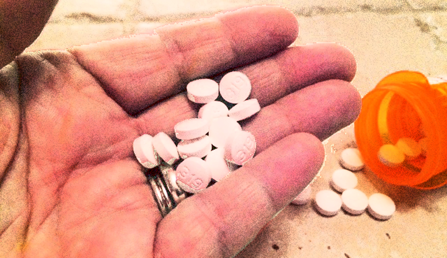Solving the Opioid Crisis:
What Has to Happen to Return Prescription Control to the Right Hands? Part III

Part III of a Three-part Series
Let’s take a look at an ideal world—a world where drugs are only given when they are truly needed to improve health, where there is no undue or skewed influence causing patients to ask for specific types of medication, where doctors use nothing but an honest education to make their choices. What might have to happen to take us in the direction of this ideal world?
- Pharmaceutical corporations must not be able to influence the education of doctors-in-training. For example, in 2009, Time Magazine revealed the millions of dollars Harvard Medical School received from pharmaceutical corporations like Pfizer and Merck.
- National Public Radio also commented on the influence Merck tried to wield at the University of Oklahoma Health Sciences Center and the millions of dollars this medical school also received from pharmaceutical corporations.
- Once that is done, medical school curricula would need to be reviewed and revised to de-emphasize treatment of pain and emphasize the correction of underlying conditions. And Continuing Education services for medical personnel could not be funded, openly or secretly, created or sponsored by pharmaceutical corporations.
- Pharmaceutical lobbying expenditures would be severely limited to far less than the $240 million spent each year now.
- Pharmaceutical corporations or sales representatives who stray from the truth about their drugs would be prosecuted for fraud and, if guilty, jailed. Or murder, if their methods result in the deaths of patients.
- Pharmaceutical corporations would also not be allowed to fund studies that are then used as the guides for prescribing medications to patients nor would they be allowed to finance ostensibly non-profit organizations that claim to advocate for pain patients.
- Any state laws such as the one in California that forces doctors to change their examining or prescribing procedures for non-medical reasons needs to be reversed.
- Direct-to-consumer advertising of medical drugs, procedures or devices needs to end. This requires the duties and actions of the Food and Drug Administration to change.

- There would be no satisfaction surveys offered to patients in hospitals asking them if they are happy with their service. As CBS News reported about our current situation, Medicare payments to hospitals with low satisfaction scores may be cut. Receiving pressure from administrators to keep scores high, doctors may be inclined to prescribe more painkillers to eliminate a patient’s pain solely to keep him happy—but then there is a greater risk of addiction among these patients.
- Doctors who refuse to give painkillers to drug-seeking patients, especially those in emergency rooms, will need more support. There is plenty of documentation available on the way these doctors feel endangered either by the patients or by hospital administrators if they refuse, like a report in the New York Times makes very clear.
If we made these changes, what would the results be?
- Medical doctors would work with patients to help them find alternative solutions to their pain, perhaps including chiropractic, massage, acupuncture, exercise, physical therapy, maybe even life coaching. (Understandably, this is not a solution for every patient but many can benefit.)
- The public would get used to the idea that as they recover from an injury or surgery their pain may not be as completely eliminated since they will be given lower doses of painkillers for a shorter time. They would also understand that potent painkillers would not be supplied for less-critical problems like low back pain, sprained ankles or tooth extractions (which they were never meant for, anyway.)
- Patients would stop asking for specific drugs and indeed, gradually stop thinking that they need a drug-based solution to dissatisfaction with their lives, health or bodies. They would be encouraged to develop healthier lives to eliminate or reduce the need for medicine.
Opioids have important uses. They provide relief after serious injuries and surgeries, ease the pain of chronic injuries or illness that won’t respond to other forms of relief, and ease cancer pain and end-of-life pain. There is no intention to take pain medication away from those for whom it has been the only way to achieve a tolerable quality of life.
If America began making these changes, it’s likely there would be some disruption. Those patients who must rely on pain relievers may have a hard time getting the medication they need for a while which is, regrettably, a possible effect as these adjustments are made.
Some doctors won’t want to change their minds. Other doctors are making too much money by dispensing opioids or medication-assisted treatment drugs like Suboxone to those who become addicted. These doctors and other people profiting from the status quo are likely to be obstructive. But there are lives at stake. MANY lives at stake.
Shifting prescribing control into the right hands is but one aspect of the bigger solution that must include law enforcement, drug rehabilitation and drug prevention in addition to these changes.
We simply wanted to educate you, the reader, on one side of the opioid addiction problem—a broken system that has put prescribing control in the wrong hands: the hands of government agencies, mis-trained doctors, pharmaceutical companies and other places it does not belong. Fixing this system will not be fast or easy but we must get started on these changes to turn this whole deadly situation around.


 ®
®